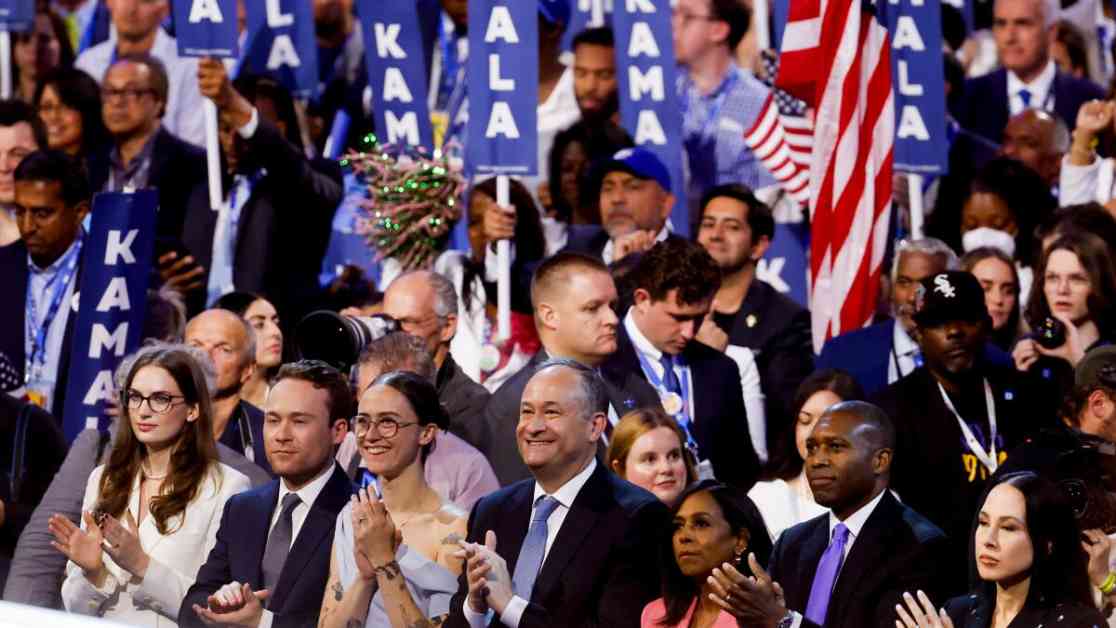The Diverse Family of Kamala Harris: A Unique and Inspiring Story
As Vice President Kamala Harris continues her campaign for president, she is accompanied by what her husband refers to as their “big, beautiful, blended family.” Together, they represent a diverse mosaic of national origins, cultures, and values that reflect the modern American family.
**A Modern American Family**
Harris’ family is a true reflection of the changing landscape of American households. With her Jamaican Indian background and her husband Doug Emhoff’s Jewish heritage, their family includes her white Gen Z stepchildren, Black brother-in-law, Indian auntie, and even her husband’s white ex-wife. This diverse mix of backgrounds defies traditional family structures and serves as a powerful representation of the evolving American family.
**Changing Family Dynamics**
Data shows that “nontraditional” families, such as single parents, single adults, cohabiting couples, and stepfamilies, now outnumber “traditional” nuclear families in the United States. With more than 4 out of 10 adults having at least one step relative, and about 16% of children living in households with step or half-siblings, the definition of family is expanding and becoming more inclusive.
In comparison to 1960, when the majority of children lived with two parents in their first marriage, the increasing prevalence of nontraditional family structures reflects the changing societal norms and values. Harris, born in 1964 to an Indian mother and Jamaican father who divorced during her childhood, embodies this shift towards more diverse and blended families.
**Embracing Diversity**
Harris’ story is not just about her own family, but about the broader trend towards embracing diversity in all aspects of society. From multiracial partnerships to the growing number of women choosing not to have children, the traditional notions of family are being redefined. With nearly 34 million people identifying as multiracial in 2020, representing about 10% of the population, the face of America is becoming increasingly diverse.
Despite the political divides on issues of family values and diversity, the makeup of liberal and conservative families is more similar than one might expect. Both sides have mixed-race families, with only a slight difference in percentages. This indicates that the acceptance and celebration of diverse family structures transcend political affiliations.
**A Family at the Forefront**
Harris has placed her family at the forefront of her political journey, emphasizing the importance of her upbringing and the values instilled by her mother. In her autobiography, she recounts her mother’s efforts to ensure that she and her sister embraced their dual identities as Black women, highlighting the importance of self-confidence and pride in one’s heritage.
As part of a blended family herself, Harris understands the complexities and challenges that come with navigating relationships after divorce. Her stepchildren choosing to call her “Momala” instead of “stepmom” is a testament to the bond they share and the inclusivity of their family dynamic. This willingness to embrace new roles and redefine traditional labels is a reflection of the changing norms in modern families.
**Historical Precedents**
The concept of blended families is not new in American history. From George Washington’s step-grandchildren to Thomas Jefferson’s relationship with Sally Hemings, the first families of the United States have always had complex family dynamics. Despite the challenges and controversies that may arise, these families have played a significant role in shaping the fabric of American society.
The election of Barack Obama in 2008 as the first Black president with a mixed-race heritage marked a significant milestone in American history. Obama’s story of a biracial upbringing and his message of unity and progress resonated with many Americans, highlighting the diversity and inclusivity of the nation.
**Embracing Diversity in Politics**
As the landscape of American families continues to evolve, so too does the representation in politics. Leaders like Kamala Harris and JD Vance, whose families reflect the diversity of the nation, are paving the way for a more inclusive and representative government. Vance’s marriage to Usha Chilukuri Vance, a Hindu woman of Indian descent, showcases the changing face of political families and the importance of embracing different backgrounds and perspectives.
The acceptance of diverse family structures in politics is a reflection of the broader societal shift towards inclusivity and acceptance. As more leaders come from nontraditional family backgrounds, the traditional notions of family are being redefined and expanded to encompass a wider range of experiences and identities.
In conclusion, the diverse family of Kamala Harris serves as a powerful example of the changing landscape of American families. As the nation continues to evolve, embracing diversity and inclusivity in all aspects of society, including politics, is essential for building a more cohesive and representative future.



























